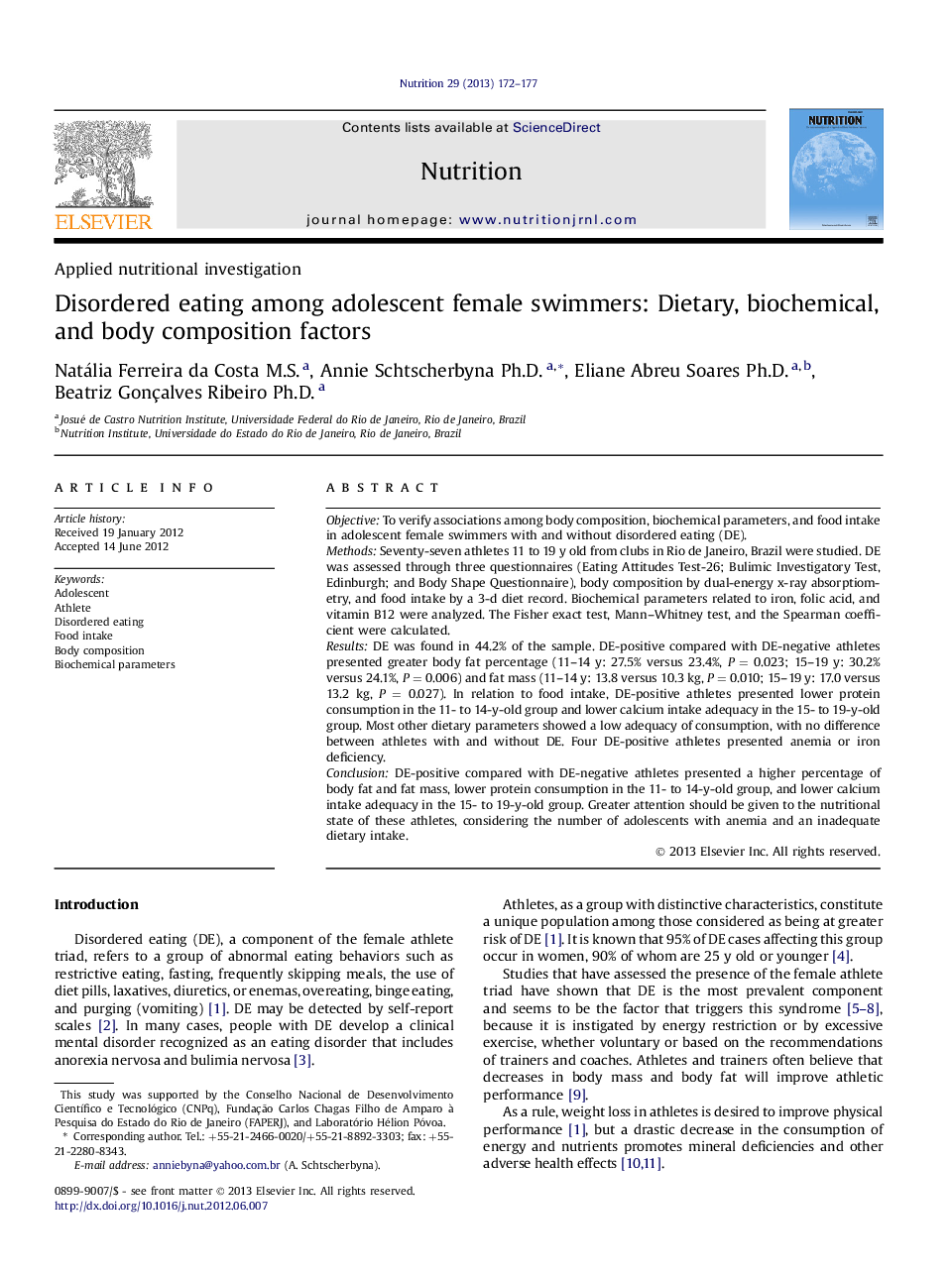| Article ID | Journal | Published Year | Pages | File Type |
|---|---|---|---|---|
| 6090104 | Nutrition | 2013 | 6 Pages |
ObjectiveTo verify associations among body composition, biochemical parameters, and food intake in adolescent female swimmers with and without disordered eating (DE).MethodsSeventy-seven athletes 11 to 19 y old from clubs in Rio de Janeiro, Brazil were studied. DE was assessed through three questionnaires (Eating Attitudes Test-26; Bulimic Investigatory Test, Edinburgh; and Body Shape Questionnaire), body composition by dual-energy x-ray absorptiometry, and food intake by a 3-d diet record. Biochemical parameters related to iron, folic acid, and vitamin B12 were analyzed. The Fisher exact test, Mann-Whitney test, and the Spearman coefficient were calculated.ResultsDE was found in 44.2% of the sample. DE-positive compared with DE-negative athletes presented greater body fat percentage (11-14 y: 27.5% versus 23.4%, P = 0.023; 15-19 y: 30.2% versus 24.1%, P = 0.006) and fat mass (11-14 y: 13.8 versus 10.3 kg, P = 0.010; 15-19 y: 17.0 versus 13.2 kg, P = 0.027). In relation to food intake, DE-positive athletes presented lower protein consumption in the 11- to 14-y-old group and lower calcium intake adequacy in the 15- to 19-y-old group. Most other dietary parameters showed a low adequacy of consumption, with no difference between athletes with and without DE. Four DE-positive athletes presented anemia or iron deficiency.ConclusionDE-positive compared with DE-negative athletes presented a higher percentage of body fat and fat mass, lower protein consumption in the 11- to 14-y-old group, and lower calcium intake adequacy in the 15- to 19-y-old group. Greater attention should be given to the nutritional state of these athletes, considering the number of adolescents with anemia and an inadequate dietary intake.
